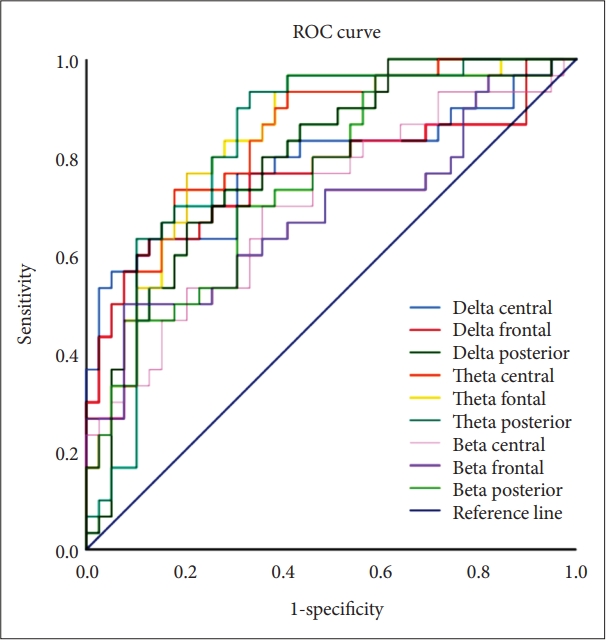 |
 |
- Search
| Psychiatry Investig > Volume 20(2); 2023 > Article |
|
Abstract
Objective
Methods
Results
Notes
Availability of Data and Material
Due to the sensitive nature of this study, participants were assured that raw data would remain confidential and would not be shared.
Conflicts of Interest
The authors have no potential conflicts of interest to disclose.
Author Contributions
Conceptualization: Seung Bhin Kim, Su Hyun Bong, Jun Won Kim. Data Curation: Seung Bhin Kim. Formal analysis: Seung Bhin Kim, Su Hyun Bong. Investigation: Seung Bhin Kim. Methodology: Seung Bhin Kim, Su Hyun Bong, Jun Won Kim. Project administration: Jun Won Kim. Supervision: Jun Won Kim. Visualization: Seung Bhin Kim, Su Hyun Bong. WritingŌĆöoriginal draft: Seung Bhin Kim. WritingŌĆöreview & editing: Su Hyun Bong, Jong Hun Lee, Tae Young Choi, Seo Young Yoon, Jun Won Kim.
Funding Statement
This study was supported by the Choi Shin-Hai Neuropsychiatric Research Fund of the Korean Neuropsychiatry Research Foundation in 2021.
Figure┬Ā1.

Figure┬Ā2.

Figure┬Ā3.

Table┬Ā1.
| Delirium group (N=30) | Control group (N=39) | p | |
|---|---|---|---|
| Sex | 0.387 | ||
| ŌĆāMale | 15 | 17 | |
| ŌĆāFemale | 15 | 22 | |
| Age (yr) | 72.27┬▒12.76 | 67.97┬▒6.83 | 0.066 |
| DRS-R-98 | |||
| ŌĆāSeverity | 20.90┬▒9.92 | NA | NA |
| ŌĆāTotal | 26.73┬▒11.02 | NA | NA |
| CGI-S | 5.30┬▒0.70 | 2.92┬▒0.74 | <0.001* |
Table┬Ā2.
|
Absolute power (╬╝V2) |
p | ||
|---|---|---|---|
| Delirium group (N=30) | Control group (N=39) | ||
| Delta | |||
| ŌĆāFrontal | 16.75┬▒6.86 | 10.51┬▒4.26 | <0.001* |
| ŌĆāCentral | 14.64┬▒7.04 | 8.37┬▒3.68 | <0.001* |
| ŌĆāPosterior | 15.09┬▒6.66 | 9.04┬▒5.84 | <0.001* |
| Theta | |||
| ŌĆāFrontal | 18.19┬▒12.15 | 7.72┬▒6.15 | <0.001* |
| ŌĆāCentral | 20.55┬▒14.65 | 8.09┬▒8.00 | <0.001* |
| ŌĆāPosterior | 22.13┬▒16.54 | 9.37┬▒11.71 | <0.001* |
| Alpha | |||
| ŌĆāFrontal | 12.36┬▒11.61 | 12.21┬▒11.46 | 0.594 |
| ŌĆāCentral | 13.45┬▒10.58 | 13.29┬▒12.71 | 0.45 |
| ŌĆāPosterior | 15.89┬▒12.67 | 17.90┬▒20.50 | 0.569 |
| Beta | |||
| ŌĆāFrontal | 6.48┬▒3.92 | 9.21┬▒6.32 | 0.009* |
| ŌĆāCentral | 7.38┬▒5.07 | 10.86┬▒6.47 | 0.004* |
| ŌĆāPosterior | 6.30┬▒4.35 | 10.80┬▒6.06 | <0.001* |
| Gamma | |||
| ŌĆāFrontal | 1.52┬▒1.09 | 2.80┬▒4.68 | 0.032 |
| ŌĆāCentral | 1.29┬▒0.88 | 1.89┬▒1.28 | 0.018 |
| ŌĆāPosterior | 1.01┬▒0.70 | 1.36┬▒0.85 | 0.019 |
REFERENCES







